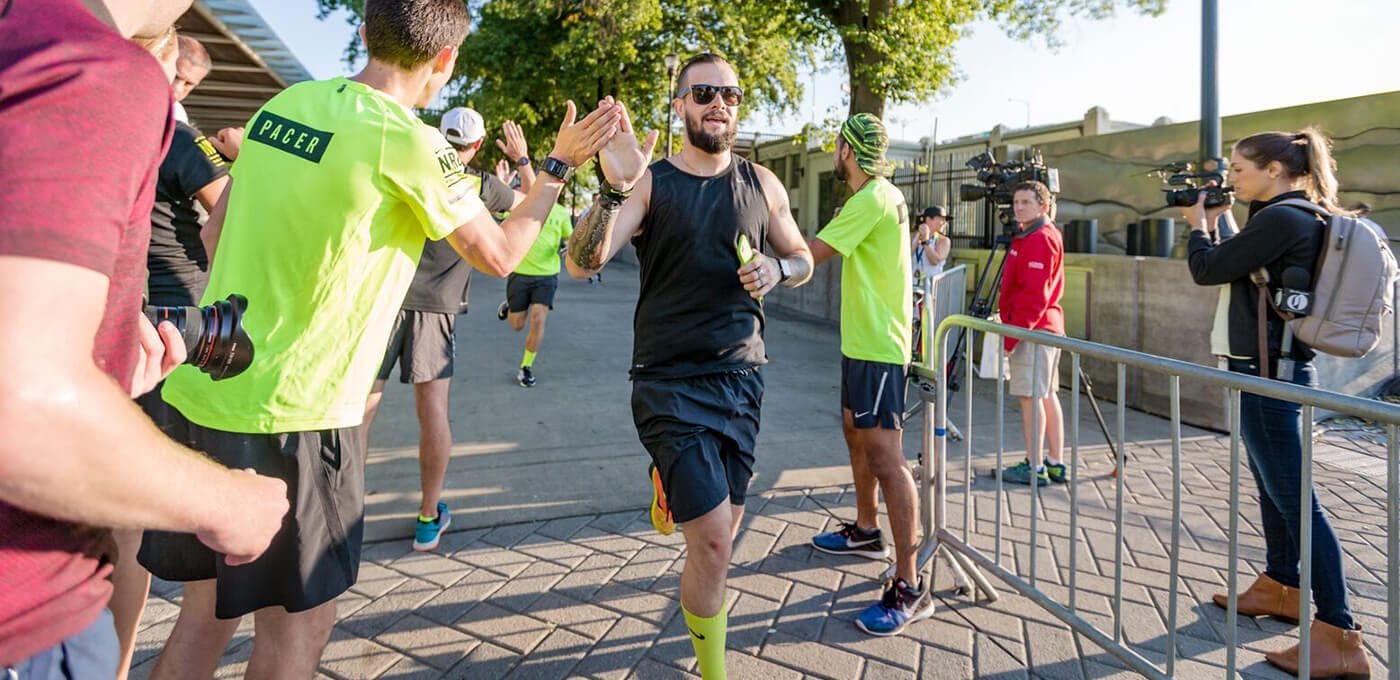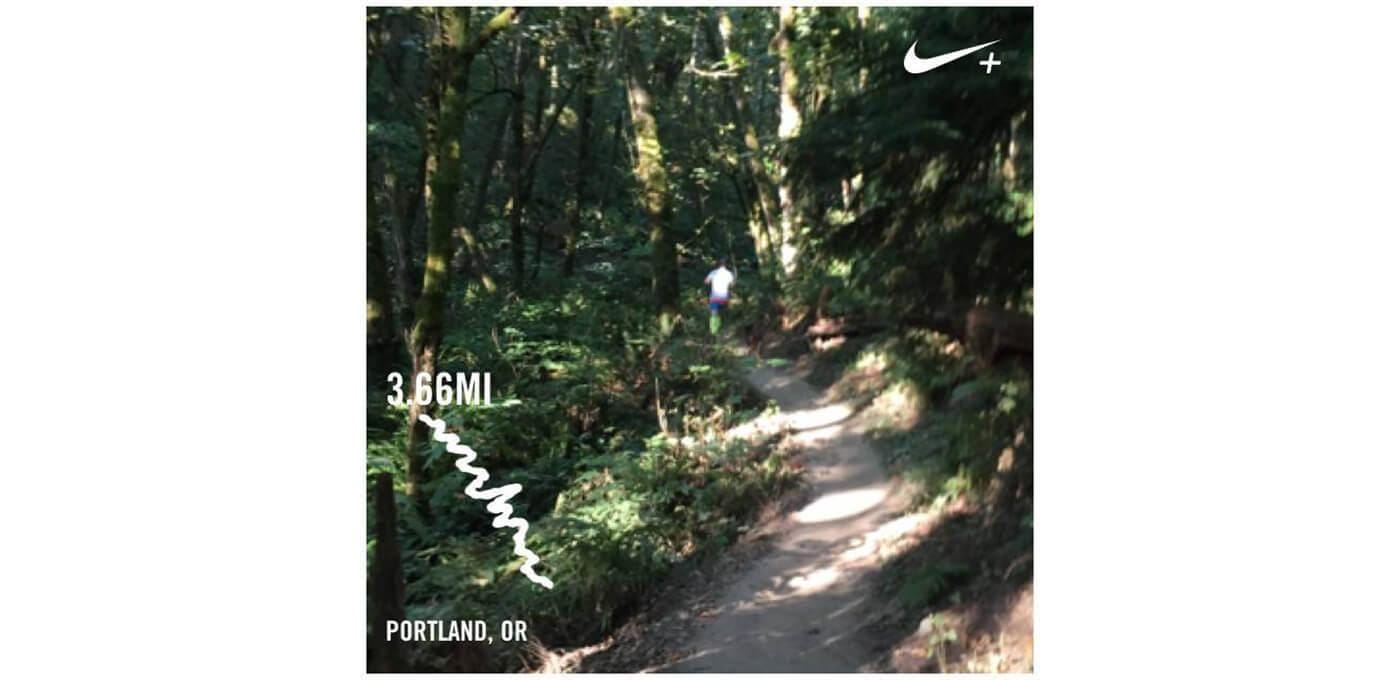Nike+ Design Director MDavid Low on what it's like to go from agency to in-house brand and how to build delightful digital products.

I have known Mdavid Low (MD) through 4 jobs and watched him blaze new trails, push boundaries and get the craziest ideas ACTUALLY BUILT. When MD says "the creative life rarely moves in a straight line" he means it.
Low is the Design Director and Category Lead for the Nike+ running app that helps runners track their workouts (often with some pre-recorded encouragement from star athletes). The app is listed as an “essential” on iTunes and has a seemingly permanent home in the Health and Fitness category’s top 10.
But before landing at one of the biggest brands in the world, Low worked as a producer, technologist, and creative director within agencies, dealing directly with brands rather than being the brand.
The wide-ranging experience has given him an appreciation for the generalist and his background in motion graphics have given him an appreciation for a seamless customer experience. Below we talk to him about career changes, creating user experiences beyond the screen, and the end of the specialist.
Before Nike, you were both a producer and Chief Technologist. Has your technology background affected your view of product development?
My deep understanding of technology has really driven what I do now, which I call “experience architecture.” I see it as a combination of a creative technologist and creative director, meaning you are looking at things from every single touch point of experience for a consumer. From the first time they see an ad for a product to how that experience evolves over time for them.
Right now with the running app, we are just really trying to build it out past a singular experience in your phone. For me it’s always trying to push the limits of how far you can entrench these experiences in people’s lives.
What was the transition like from working with an agency to working for a company, and from focusing on multiple projects with different aspects to now one brand and one product?
The transition change from the agency side to the brand side can be very tough, but it’s been a really rewarding experience so far. It’s a challenge, but in a way I was not used to.
I spent the last 15 years honing these skills in the agency world where you work around the pitch, and here the environment has different dynamics. You are now pitching internally to stakeholders, instead of to a brand.
Now I am actually hiring agencies instead of being the agency. What’s been nice about that is that I can start briefing in agencies in the way I would have liked, which has resulted in better work. So there are better opportunities, my history of agency work has been super valuable.
What skills does it take for a team to produce great products?
Listen more. Speak less. The sports mentality really bleeds across into our work here. We are an intense, friendly, competitive group, focused to the last degree on the athlete in motion.
The people here really believe this stuff, and the internal teams who are the most successful operate like a sports team. When you are in the doors here you are on the field. The entire focus is analogous to getting that ball down the line into the end zone with the absolute best experience.

The design, development and prototyping process is evolving rapidly. What insights can you give us on Nike’s process?
We work exclusively on Sketch here. We have prototyping directly built into our design process now. A lot of that has to do with Sketch and a lot of stuff happens for us almost in real time where we will be working on designs and then they move directly into prototypes.
We constantly need almost-custom tooling built around the speed at which we work. As a result, I think we are trending out of that specialist thing.
We have two production designers who oversee a lot of that work but we are really reshaping the types of teams we are looking for… So I value more of these generalist teams who can switch gears and move from one kind of project to another.
What tips do you have for teams evolving their process?
I think every single designer and developer on the planet should be required to go through motion animation studies. When you keep these rules in mind and use them when creating experiences for consumers, you really focus on things like eliminating “jump cuts” for the experience, you eliminate the need for the consumer to learn the experience and it becomes a completely seamless and enjoyable experience.
Another piece of advice: Don’t stop. Once you get comfortable with technology, look for the next one. Whether it’s a day, a week, or an hour a day, focus on something that’s new. Your best work comes from when you reset yourself and your team. Everything should constantly be evolving. At least by understanding the value of these new and emerging technologies, you stay aware of them and you learn how to leverage them.
DON’T STOP. ONCE YOU GET COMFORTABLE WITH A TECHNOLOGY, LOOK FOR THE NEXT ONE.
With the digital landscape shifting from major releases to constant evolution, how do you prioritize changes, road maps, and understand key user wants?
That’s one of the biggest challenges we have here at Nike. I have this model in my head that is 75 percent understanding what the consumers want now, and 25 percent providing them something that they don’t know they want yet.
Does that allow room for a lot of failures?
When we try to anticipate where things are going, we probably have an 80 percent failure rate. But when we do win, it drives those moments of magic for us and sets us up for the next two summers.
There is no such thing as a failure. It’s just learning. The analogy I use with my team a lot is that if you think of it as we are building the next new car, and when you turn the key the engine doesn’t turn over, nothing has failed. You just learn that what you did didn’t get the engine to start.
WHEN YOU TURN THE KEY THE ENGINE DOESN’T TURN OVER, NOTHING HAS FAILED. YOU JUST LEARN THAT WHAT YOU DID DIDN’T GET THE ENGINE TO START.
What are the biggest pros and cons of being a “utility man,” as you are, as opposed to a specialist?
I think it’s led me to be somewhat decent at being the skipper on the team. Helping to guide and motivate the team towards the right outcome, but with enough of the right insights from each role in my past to be able to provide the right insights for the future.
What helps you keep the focus on your product?
One thing we do successfully here at Nike is to keep the people who are making the things for Nike involved with the things that they make. So we are constantly out at Run Clubs, have offsites, and are part of the community that we are helping to create. It’s also a reality check—we spend so much time in front of our computers that the reminder that we are not doing it for us, by being part of that community, is helpful and one of our most successful traits.
In case you're wondering what it looks like to go running with MD, I'll share my view from a trail run we did together in Portland OR.


